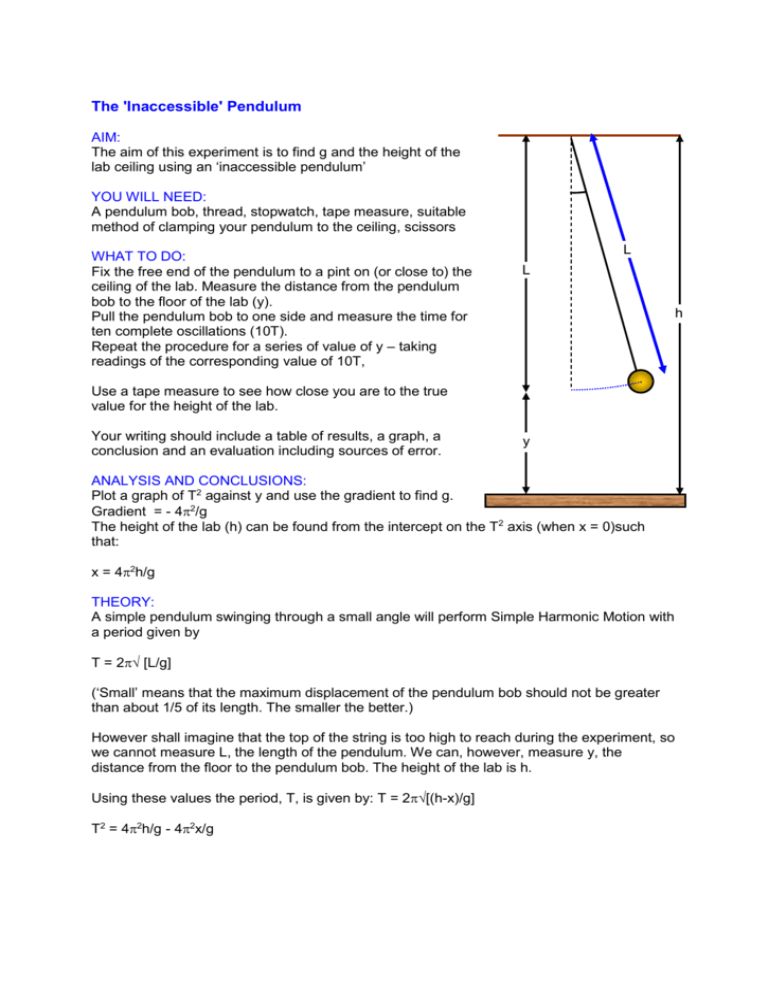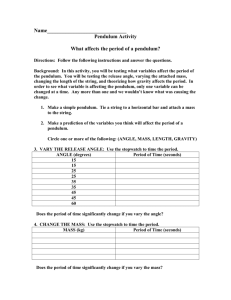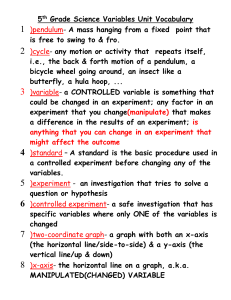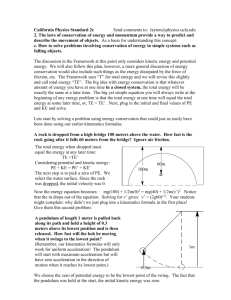Inaccessible pendulum
advertisement

The 'Inaccessible' Pendulum AIM: The aim of this experiment is to find g and the height of the lab ceiling using an ‘inaccessible pendulum’ YOU WILL NEED: A pendulum bob, thread, stopwatch, tape measure, suitable method of clamping your pendulum to the ceiling, scissors WHAT TO DO: Fix the free end of the pendulum to a pint on (or close to) the ceiling of the lab. Measure the distance from the pendulum bob to the floor of the lab (y). Pull the pendulum bob to one side and measure the time for ten complete oscillations (10T). Repeat the procedure for a series of value of y – taking readings of the corresponding value of 10T, L L h Use a tape measure to see how close you are to the true value for the height of the lab. Your writing should include a table of results, a graph, a conclusion and an evaluation including sources of error. y ANALYSIS AND CONCLUSIONS: Plot a graph of T2 against y and use the gradient to find g. Gradient = - 42/g The height of the lab (h) can be found from the intercept on the T2 axis (when x = 0)such that: x = 42h/g THEORY: A simple pendulum swinging through a small angle will perform Simple Harmonic Motion with a period given by T = 2 [L/g] (‘Small’ means that the maximum displacement of the pendulum bob should not be greater than about 1/5 of its length. The smaller the better.) However shall imagine that the top of the string is too high to reach during the experiment, so we cannot measure L, the length of the pendulum. We can, however, measure y, the distance from the floor to the pendulum bob. The height of the lab is h. Using these values the period, T, is given by: T = 2[(h-x)/g] T2 = 42h/g - 42x/g











